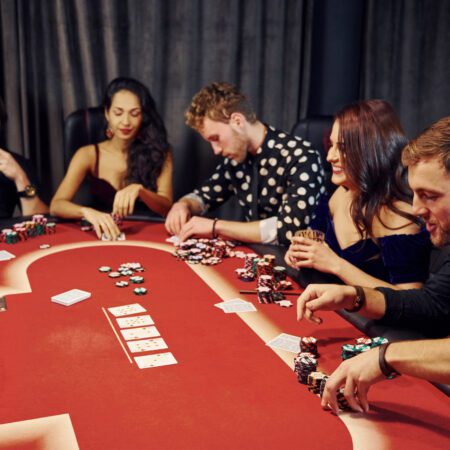Discover how media influences our perceptions of gambling, from cinematic portrayals to real-life implications. Explore the psychology behind the allure of gambling in media.
Under the Spotlight: The Impact of Media on Gambling Culture
Ever found yourself absorbed by a glamorous portrayal of a high-stakes poker game in a movie, the tension palpable, the stakes sky-high? Or perhaps it’s the nail-biting suspense of a last-minute gamble in a television series that has you gripped, wondering what the hero will do next? It’s fascinating, isn’t it, how these scenes can stir emotions within us, making us feel a part of the pulsating world of gambling, even when we’re merely spectators.
But here’s a question for you: have you ever contemplated the impact media has on our perception of gambling? You might be surprised to learn that scientific research indicates a significant correlation between media depictions of gambling and the glamorization and normalization of gambling behavior.
Cinematic Influence on Gambling Culture
Whether it’s James Bond’s suave charm at the poker table or the high drama of the roulette wheel in ‘Casablanca’, it’s hard to deny that media portrayals of gambling are far from mundane. They paint a picture of suspense, risk, and reward that is undeniably captivating.
But, as alluring as these depictions are, they can also propagate a kind of cognitive distortion, leading to unrealistic expectations about gambling outcomes.
As discussed in a previous post on cognitive distortions in gambling, our brains are skilled at tricking us into believing the odds are in our favor. Add to this the glamour and excitement often associated with gambling in media, and it becomes clear why many may have skewed perceptions of reality when it comes to this industry.
The Media’s Double-Edged Sword
The media’s impact on gambling culture isn’t entirely black and white—it’s a double-edged sword, if you will. On one hand, it can stimulate a healthy interest in regulated, responsible gambling. Exciting scenes from the silver screen or persuasive advertising campaigns can indeed introduce people to the thrilling world of gambling in a controlled environment, promoting it as a form of entertainment rather than an addictive habit.
On the flip side, the glamorization of gambling can potentially mask its darker side. In the razzle-dazzle of it all, it’s easy to forget about the potential consequences of problem gambling. The risk of addiction, financial woes, and issues like mental health often get pushed under the casino carpet, so to speak.
“You gotta know when to hold ’em, know when to fold ’em, know when to walk away,” sings Kenny Rogers in his famous song, ‘The Gambler’. It encapsulates the thrill, yet underscores the importance of responsible decision-making in gambling. Such messages, while subtle, are crucial in media portrayals.
Reality Versus The Reel
The difference between real-world gambling and its media representation is akin to comparing a zircon to a diamond. Yes, they both glitter and catch the eye, but their substance is starkly different. And it’s this difference that is often lost in translation when the media portrays gambling.
The media often beautifies the concept of ‘the gamble,’ focusing on the allure of big wins and the exhilaration of risk-taking. But the reality of gambling is not always as glittering. It often involves knowing when to stop, understanding the odds, and being responsible about one’s financial decisions. Real-life gambling can be a social activity that offers its own kind of thrill, but it also requires a considerable amount of self-control and understanding of one’s own limits.
Striking a Balance
So, where does this leave us? We certainly can’t deny the media’s influence on gambling culture, nor can we completely blame it for the adverse impacts of problem gambling. Like most things, it’s about striking a balance.
And that balance begins with awareness. Being cognizant of the media’s influence is the first step towards understanding its impact on our perceptions of gambling. It’s about distinguishing the reel from the reality, the glitter from the grit. And above all, it’s about recognizing that while gambling can be an exciting form of entertainment, it should be approached with a level head and a clear understanding of the risks involved.
Because, after all, life is a gamble, isn’t it? And in this game of life, understanding the odds and playing responsibly can make all the difference.










